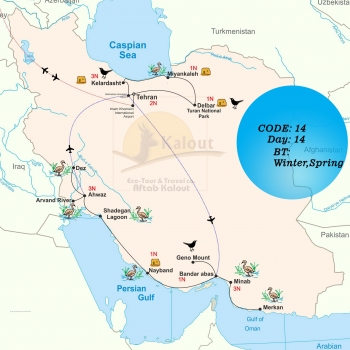- Display 15 Products per page
Iran Bird Watching Tour
Watch the Exotic Variety of Endemic & Immigrating Birds
Birdwatching tour in Iran is suitable for experienced ornithologists and novice birders, thanks to the high number of bird species, the accessibility of the birding sites and the possibilities for year-round viewing. The country has endemic and rare birds, and species of special interest.
Iran is home to more than 527 species. Infact Although large portions of the country are arid to semi-arid, Iran possesses a very rich and diverse bird fauna.
Two main factors are responsible for this; the great range of habitats—from permanent snows to deep deserts and from lush deciduous forest in the north to palm groves and mangroves in the south—and Iran’s position at a crossroads between three major faunal regions. The bulk of the country lies within the Palearctic faunal region, which stretches from Europe and North Africa across north and central Asia to the Soviet Far East and Japan. Lying along the southern edge of this region, Iran’s bird fauna includes a large Western Palearctic faunal element, reaching its eastern extremity in the central Alborz and Zagros mountains, and a smaller, but still marked, Eastern Palearctic element, which extends into northeastern Iran in the highlands of Khorasan. In a number of cases, western and eastern forms—either closely related species or well differentiated subspecies of a single species—come together with a narrow zone of hybridization in the central Alborz; e.g., the wheatears Oenanthe hispanica and O. pleschanka, the buntings Emberiza melanocephala and E. bruniceps, and the green-backed and gray-backed forms of the great tit Parus major (Haffer). In southern Iran, two other faunal regions have a pronounced influence on the avifauna: the Oriental region in the southeast, and the Afrotropical (Ethiopian) in the southwest.


